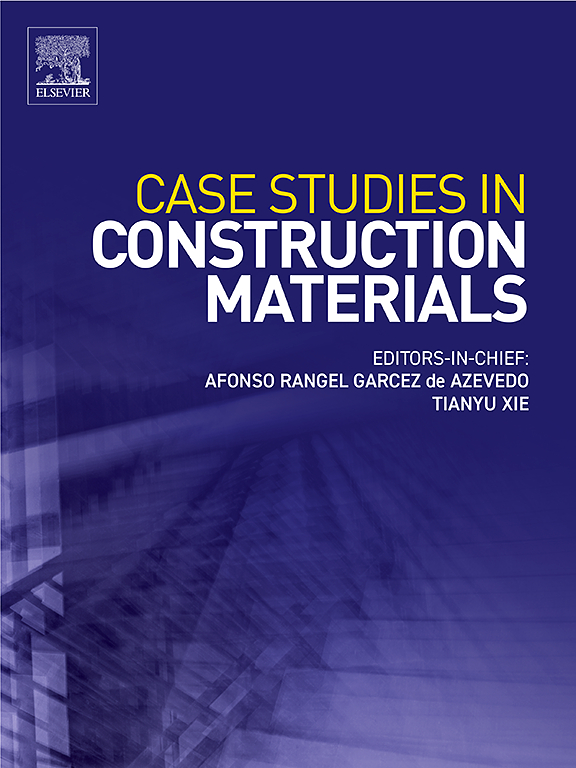Study on shear mechanisms of UHPC-NC reinforced interfaces and grooved & reinforced interfaces
IF 6.6
2区 工程技术
Q1 CONSTRUCTION & BUILDING TECHNOLOGY
引用次数: 0
Abstract
Understanding the shear mechanisms of both reinforced and grooved & reinforced UHPC-NC interfaces is crucial for designing and applying UHPC-NC composite arch structures. In this study, double-shear tests were conducted on these two interface types, with systematic variations in reinforcement spacing and diameter. Based on the analysis of the failure mechanisms, calculation methods for the shear capacity of both interface types were developed. The results revealed two distinct failure modes in the reinforced interface: steel-shear failure and NC-splitting failure. Conversely, the grooved & reinforced interface exclusively exhibited NC-splitting failure. The shear strength of reinforced interfaces shows a proportional increase with reduced rebar spacing, while interfacial slip demonstrates an inverse correlation. Similarly, both interfaces exhibit enhanced shear strength and reduced slip with larger rebar diameters. Analysis of load-slip curves reveals four distinct stages, demarcated by critical transitions in reinforcement stress states. Furthermore, interfacial slip serves as a reliable indicator for deciphering shear-resistance mechanisms in both interfaces. The reinforced interface failed when the rebar dowel force reached either the rebar's ultimate tensile capacity or the NC splitting force. Failure of the grooved & reinforced interface occurred when rebar dowel force increases to the NC splitting force after the groove-induced shear remains at post-transition groove-induced shear resistance. The NC splitting force is proportional to both the spacing and diameter of the reinforcement. The proposed formula can accurately predict the shear capacity of both interface types. The result is a clear guidance for the calculation of the shear strength of UHPC-NC grooved & reinforced interface.
UHPC-NC加筋界面及沟槽加筋界面剪切机理研究
了解加筋和沟槽的剪切机制;增强UHPC-NC接口是UHPC-NC复合拱结构设计和应用的关键。本研究对这两种界面类型进行了双剪试验,配筋间距和直径有系统的变化。在分析破坏机理的基础上,提出了两种界面类型抗剪承载力的计算方法。结果表明,加筋界面有两种不同的破坏模式:钢-剪切破坏和nc -劈裂破坏。反之,沟槽&;强化界面完全呈现nc分裂破坏。配筋界面抗剪强度随配筋间距的减小呈正比增加,而界面滑移呈反比关系。同样,随着螺纹钢直径的增大,两个界面的抗剪强度都有所提高,滑移也有所减少。荷载-滑移曲线的分析揭示了四个不同的阶段,以钢筋应力状态的临界转变为界。此外,界面滑移可以作为破译两个界面剪切阻力机制的可靠指标。当配筋力达到配筋极限抗拉能力或NC劈裂力时,配筋界面失效。沟槽失效;当槽致剪力保持在过渡后的槽致剪力后,钢筋榫力增加到NC劈裂力时,出现了配筋界面。NC劈裂力与配筋的间距和直径成正比。该公式能较准确地预测两种界面类型的抗剪能力。研究结果对UHPC-NC槽管抗剪强度的计算具有一定的指导意义。强化界面。
本文章由计算机程序翻译,如有差异,请以英文原文为准。
求助全文
约1分钟内获得全文
求助全文
来源期刊

Case Studies in Construction Materials
Multiple-
CiteScore
7.60
自引率
19.40%
发文量
842
审稿时长
63 days
期刊介绍:
Case Studies in Construction Materials provides a forum for the rapid publication of short, structured Case Studies on construction materials. In addition, the journal also publishes related Short Communications, Full length research article and Comprehensive review papers (by invitation).
The journal will provide an essential compendium of case studies for practicing engineers, designers, researchers and other practitioners who are interested in all aspects construction materials. The journal will publish new and novel case studies, but will also provide a forum for the publication of high quality descriptions of classic construction material problems and solutions.
 求助内容:
求助内容: 应助结果提醒方式:
应助结果提醒方式:


